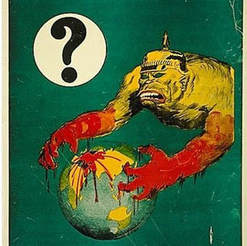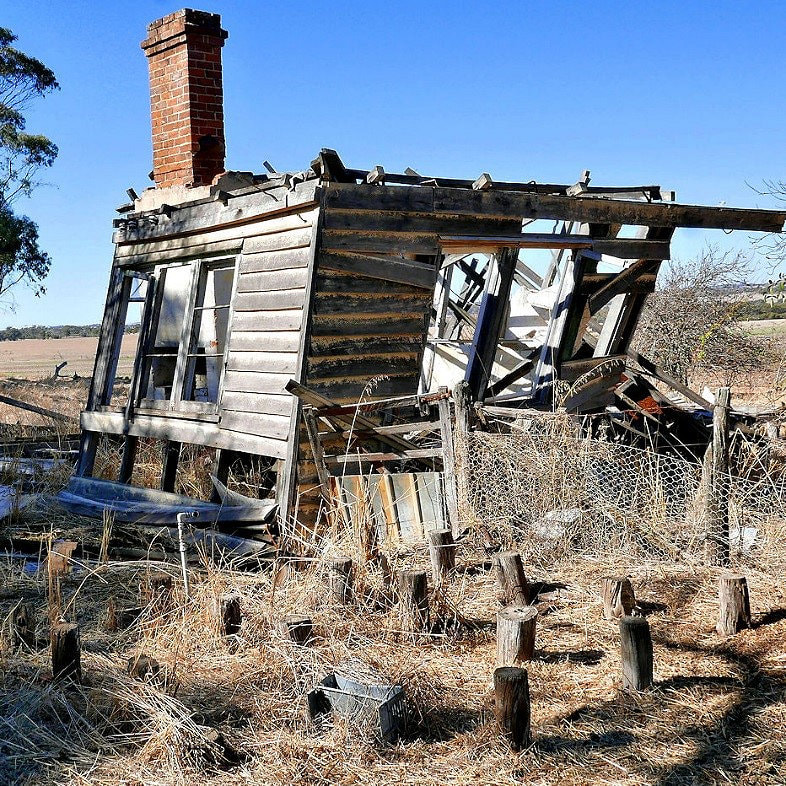 Norman Lindsay propaganda poster
Norman Lindsay propaganda poster Greetings fellow Foxies,
I was amazed to learn that from 1850 until World War I, German settlers and their descendants comprised the largest non-British or Irish group of Europeans in Australia. Locally this is evident in family names like Blythe, Braunholz, Fisher, Gath, Modra, Muller, Pustkuchen, and Wiese. Many arrived from South Australia and Victoria in the early twentieth century.
Why Germans, and why here? A Google search revealed the following (over) simplified sequence of events that attracted these people to our district.
Many of these people thrived and became good and popular citizens until The First World War.
Did you know that the Narrogin district had the highest army enlistment rate in the entire British Empire? (“Memorial 1 Narrogin and world War 1” by Maurie White. Editorial comment: this should be required reading, hopefully to avoid politicians repeatedly sending our youth to fight other countries’ wars!). The resulting lack of manpower to work the land, marry local girls, and the suffering of the survivors and there families set this district back for a generation.
during the war, men were hounded to enlist. Virulent anti-German sentiment was fostered by war fever, terrible Australian casualties and propaganda.
Thankfully this declined after the war.
I was amazed to learn that from 1850 until World War I, German settlers and their descendants comprised the largest non-British or Irish group of Europeans in Australia. Locally this is evident in family names like Blythe, Braunholz, Fisher, Gath, Modra, Muller, Pustkuchen, and Wiese. Many arrived from South Australia and Victoria in the early twentieth century.
Why Germans, and why here? A Google search revealed the following (over) simplified sequence of events that attracted these people to our district.
- Most German families came from the nation-state of Prussia with groups migrating to South Australia and Victoria beginning in 1838. Reasons include economic dislocation following the Napoleonic War, religious persecution, pressure to enlist in the Prussian army, and a British cash bounty to attract vineyard workers to Australia.
- A world depression in 1894, and a series of dry seasons called the Millennium Drought caused local financial hardship in eastern Australia.
- Paddy Hannan discovered gold at Kalgoorlie in 1894, and 15 years later the WA government created an agricultural bank to provide loans in order to attract colonists that would clear and farm large tracts of land that were opened up by railway lines.
Many of these people thrived and became good and popular citizens until The First World War.
Did you know that the Narrogin district had the highest army enlistment rate in the entire British Empire? (“Memorial 1 Narrogin and world War 1” by Maurie White. Editorial comment: this should be required reading, hopefully to avoid politicians repeatedly sending our youth to fight other countries’ wars!). The resulting lack of manpower to work the land, marry local girls, and the suffering of the survivors and there families set this district back for a generation.
during the war, men were hounded to enlist. Virulent anti-German sentiment was fostered by war fever, terrible Australian casualties and propaganda.
Thankfully this declined after the war.
The history of the Braunholtz family is recorded in “Other Fortunate Lives” Editors Hazel Green and Elizabeth Heffernan 2008. Page 39.
I was shown the ruins of the homestead, adjacent to Wickepin Springs. The Braunholz family farmed in conjunction with the Irgens family (Norwegian). Malcolm Gath remembers Carl Braunholz as being very handy with machinery, which is evident in the wide array of machine parts present.
The Google Photo album shows the remains of both houses (I think) and associated sheds and bits and pieces.
See the images on
photos.app.goo.gl/egQaRiTH8kyk395v5
I was shown the ruins of the homestead, adjacent to Wickepin Springs. The Braunholz family farmed in conjunction with the Irgens family (Norwegian). Malcolm Gath remembers Carl Braunholz as being very handy with machinery, which is evident in the wide array of machine parts present.
The Google Photo album shows the remains of both houses (I think) and associated sheds and bits and pieces.
See the images on
photos.app.goo.gl/egQaRiTH8kyk395v5
